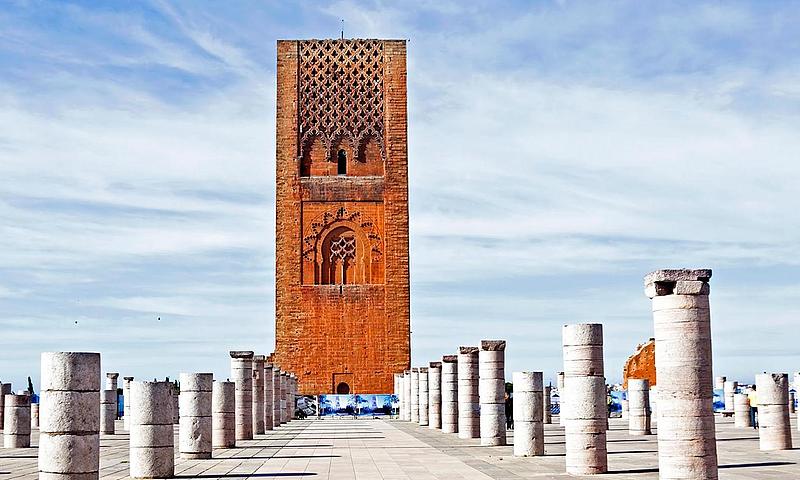
What to see in Rabat, the capital of Morocco
Rabat is an imperial city and the capital of Morocco, where the old and new come together in harmony.
It is an administrative city and home to many foreign embassies.
Read more
Rabat is an imperial city and the capital of Morocco, where the old and new come together in harmony.
It is an administrative city and home to many foreign embassies.
Read more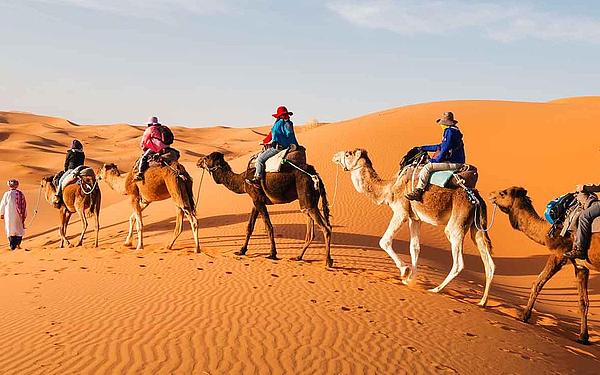
Merzouga is the so-called Pearl of the Desert in Morocco, very popular with tourists the world over and the most important tourist destination of the Moroccan Sahara.
This small village, located next to the Er Chebbi dunes, is found in Southern Morocco in the valley of the Ziz River, 50 kilometres from Erfoud and 130 from Errachidia.
Read more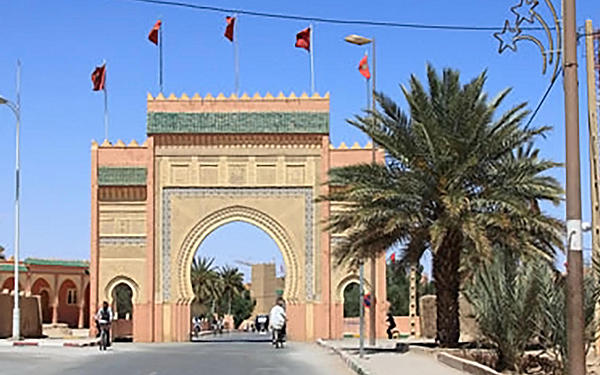
Erfoud is a town in southern Morocco, in the valley of the Ziz River, which has its source in the peaks of the Middle Atlas Mountains and flows southwards into the Sahara Desert, forming the palm grove of Tafilalet, surrounded by a broad hamada (rocky plain) dotted with areas of sand dunes.
Read more
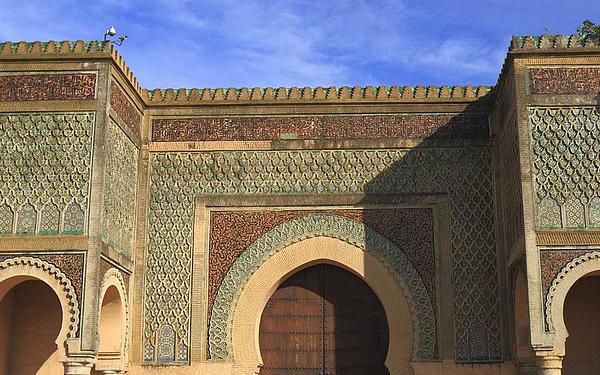
Meknès is one of the imperial cities along with Fez, Marrakesh and Rabat.
It is the least known and touristy of the four but this doesn't make it any less attractive.
It is located right in the centre of Morocco, on a plateau at the feet of the Atlas Mountains.
During the reign of Moulay Ismail, it was the country's capital and luxury palaces and walls were built. It was even called the Versailles of Morocco.
Read more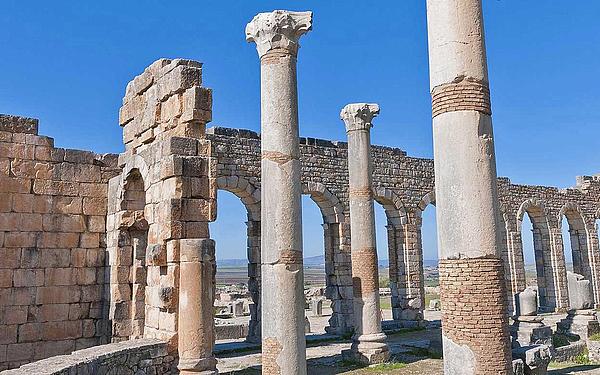
The city of Volubilis was founded in the 3rd century BC and was the capital of Mauretania Tingitana.
It is located 20 kilometres from Meknès, at the foot of the Zerhoun Mountain, and 4 kilometres from the sacred town of Moulay Idriss.
It is the best-preserved and the most visited Roman archaeological site in Northern Africa, and was declared a UNESCO World Heritage Site in 1997.
The archaeological site is located in a fertile agricultural region, with abundant crops, including olive groves and orchards, which was why it was such an important city for the Roman Empire.
Read more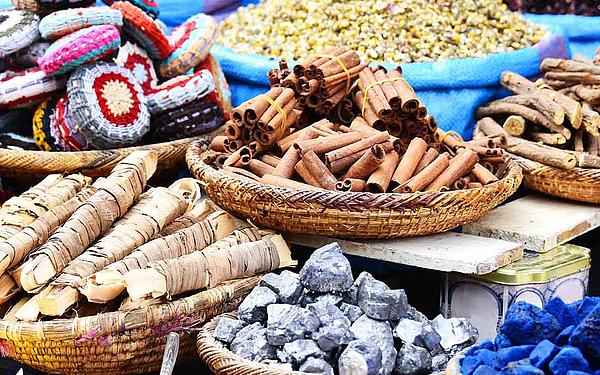
Ouarzazate is the Gateway to the Sahara, located at the feet of the Atlas mountain range, at an altitude of 1160 metres, in the valley where the Draa and Dadès rivers meet.
It's a crossroads of Saharan roads and a passageway for caravans transporting goods arriving from Sudan. Its spectacular, diverse landscapes are well worth seeing.
Today it is eminently a tourist city, capital of the Souss-Massa-Drâa region, a commercial and military centre. It is known for the hospitality of its Berber population and has a rich, varied folklore.
Read more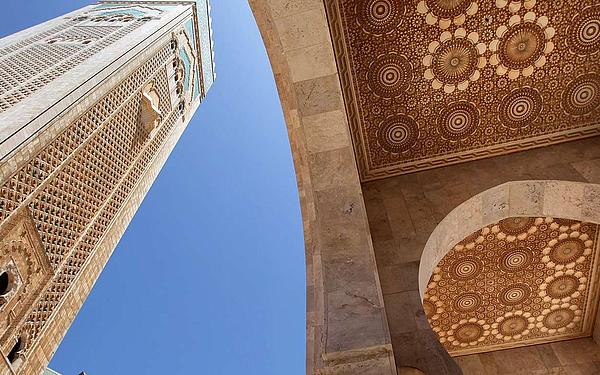
Casablanca is the largest and most important city of Morocco, with more than four million inhabitants.
It is the main economic and industrial hub and a gateway to the country. Its port is the second largest in northern Africa and handles 60% of the country's maritime traffic.
The city is located on the Atlantic coast and has a cosmopolitan and western feel about it, as well as being the country’s most modern city.
It is a major destination for big cruise ships, large fairs and business events.
It is also well known throughout the world thanks to the 1942 film, Casablanca, even though it was not filmed there.
Read more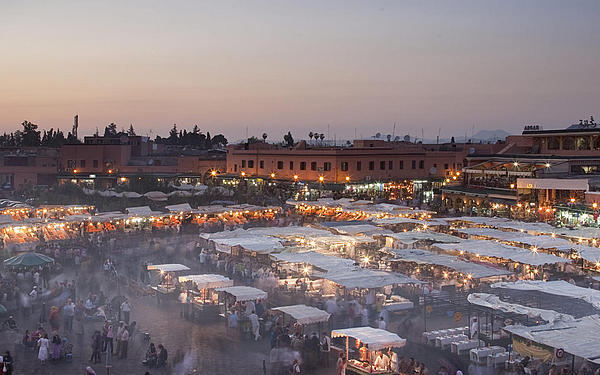
Marrakesh is a city in southern Morocco, and was its capital during the Almoravid, Almohad and Alaouite dynasties, until the arrival of the French colonisers.
The country was called the Kingdom of Marrakesh, which is where the name Morocco came from.
It is one of Morocco's imperial cities, a world-renowned city, regional business hub and major crafts and religious centre.
Today it is a cultural city, a source of inspiration for artists, a trendsetter, a host of major events and, of course, a prime tourist destination.
Read more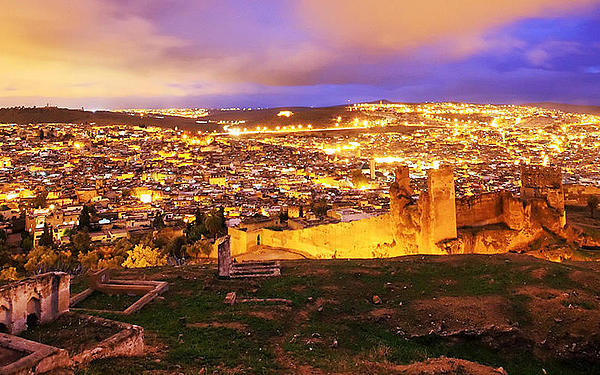
Fez is one of the imperial cities of Morocco, located on a plateau between the Rif and Middle Atlas mountains.
It is the religious and cultural capital of the country, as well as its most important centre for traditional craftsmanship.
It is frequented by tourists from all over the world for its medieval medina, which is the biggest and most beautiful in Morocco.
It is also an ideal place for buying crafts due to the wide range on offer and their high quality.
Read more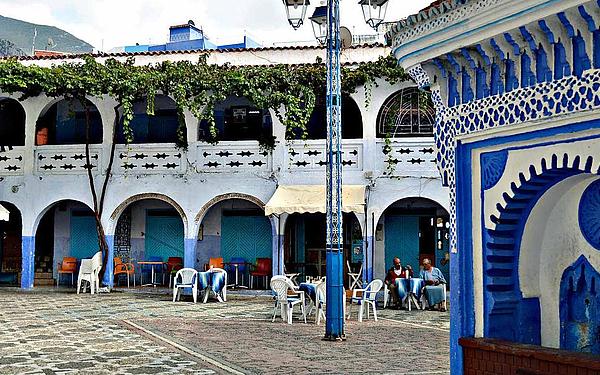
Chaouen, also known as Chefchaouen, is a small charming city with about 40,000 inhabitants located in north-eastern Morocco, near the Mediterranean Sea and in the heart of the Rif Mountains.
The town is very picturesque, with its narrow streets and whitewashed and indigo houses. This is why it is known as The Blue Pearl.
It was painted by Jewish refugees who lived here in the 1930s and its beauty is enhanced by the contrast of the brightly-coloured medina with the backdrop of the Rif Mountains.
This beauty and the relaxed, peaceful atmosphere of the city make Chaouen a top tourist attraction.
Read more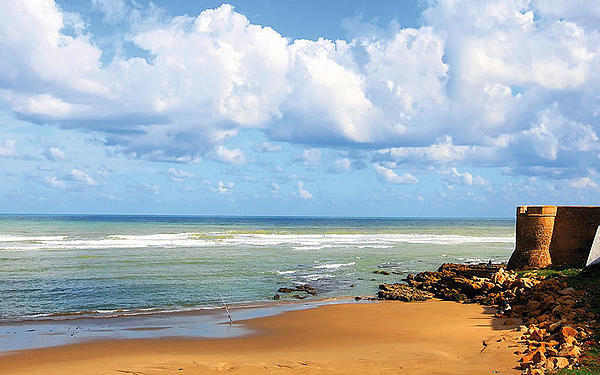
The city of Asilah is located on the Atlantic coast, 50 kilometres from Tangier and 100 kilometres from Ceuta.
It is on a plain on a hillside right by the sea.
It is a tourist city, very neat and clean, with friendly and hospitable people and is a great place to try the very best fish and seafood of the Moroccan coast.
The city is full of light, with extensive, fine-sand beaches and a wide range of leisure activities.
Read more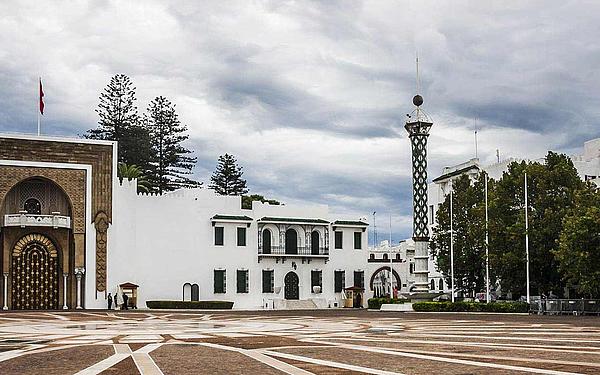
Tétouan, known as the "white dove", is a city of Berber origin in Northern Morocco. Its name means "water springs" in Berber, owing to the abundance of springs throughout the city.
It is located at the foothills of Mount Dersa, which belongs to the Hauz mountain range, about 70 kilometres from Tangier and 40 from Ceuta.
Read more